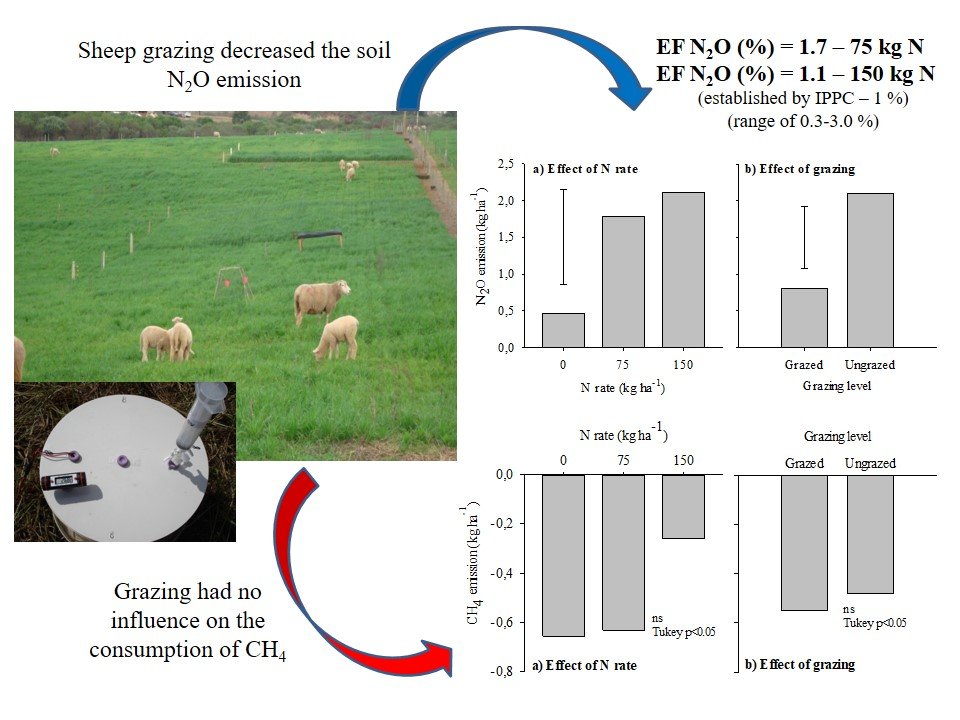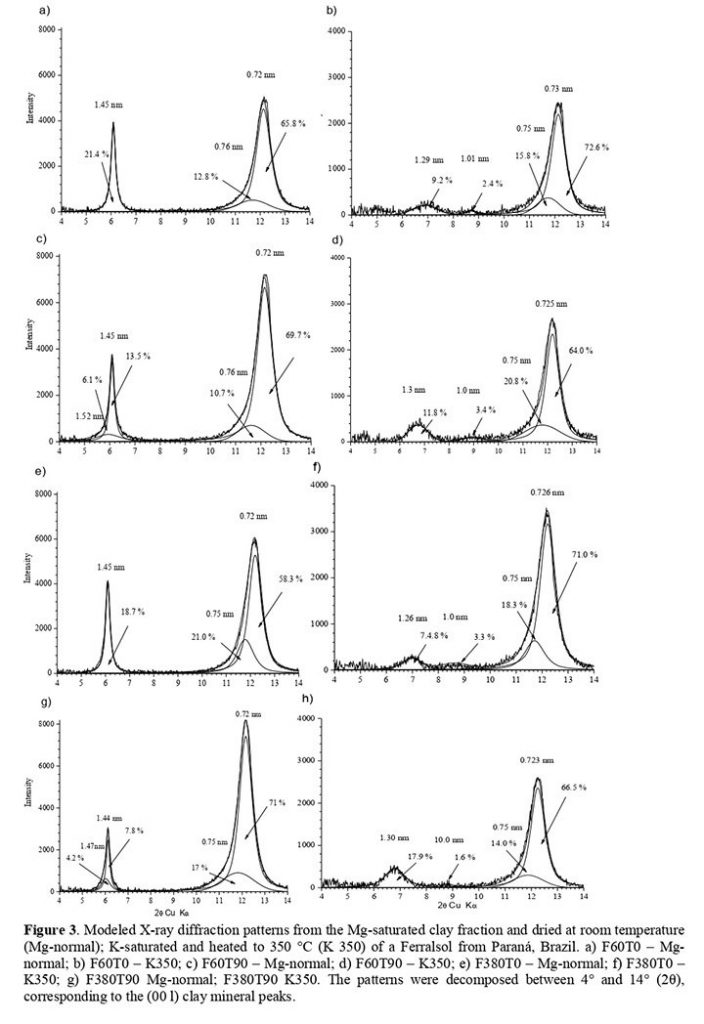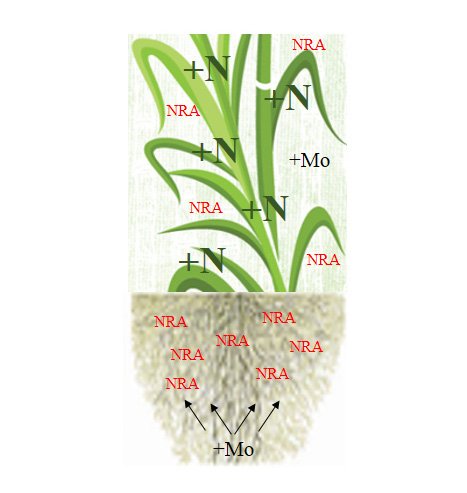Volume 43, 2019
Ecotoxicology of Pig Slaughterhouse Waste Using Lactuca sativa L., Raphanus sativus L., and Oryza sativa L.
17/Jul/2019
ABSTRACT Pork is the most consumed animal protein around the world. The production levels are significant, which results in the generation of large amounts of slaughter waste. Such waste is often disposed of improperly in agricultural areas, causing environmental imbalance by the contamination of soil and water sources with metals and pathogenic organisms. This study evaluates the phytotoxic effects of pig slaughterhouse waste in natura and after stabilization processes on lettuce (Lactuca sativa Linnaeus, 1753), radish (Raphanus sativus Linnaeus, 1753), […]
Field Description and Identification of Diagnostic Qualifiers for Urban Soils in Brazil
14/Jun/2019
ABSTRACT Human activities often alter soils found in urban areas. These alterations affect their environmental functions and potential for use. However, soils from urban areas in Brazil have not been surveyed and identified, which can pose a technical problem for the development of the city. Considering the importance of urban environments and their soils, this study aimed to evaluate the environmental and morphological characteristics and the physical properties of urban soils in Santa Maria, Rio Grande do Sul, Brazil. The […]
Phosphorus Fractions in Soil with Organic and Mineral Fertilization in Integrated Crop-Livestock System
06/Feb/2019
ABSTRACT Use of organic fertilizers in integrated crop-livestock (iCL) systems may affect soil phosphorus fractions. This study aimed to determine phosphorus fractions in the soil under the iCL system after six years of application of organic or mineral fertilizers. The experiment was conducted on a Rhodic Kandiudox (Nitossolo Vermelho Distroférrico) in a randomized block design, using a 5 × 3 + 1 factorial scheme, with four replicates. The treatments consisted of three organic fertilizers (poultry litter, pig slurry, and compost) […]
Influence of ZnO Nanoparticles and a Non-Nano ZnO on Survival and Reproduction of Earthworm and Springtail in Tropical Natural Soil
13/May/2019
ABSTRACT: In recent years, various studies and development using nanoparticles (NPs) have been carried out in the most diverse areas of knowledge. Although nanomaterials are widely employed by many sectors and some may have a fertilizing potential, little is known about their effects on the environment. This study aimed to evaluate the effect of applying, in tropical natural soil, different contents of nanoparticles of zinc oxide (NPs-ZnO) and non-nano zinc oxide (ZnO) on soil pH and on the survival and […]
Emissions of Nitrous Oxide and Methane in a Subtropical Ferralsol Subjected to Nitrogen Fertilization and Sheep Grazing in Integrated Crop-Livestock System
14/Jun/2019
ABSTRACT Brazilian agriculture contributes significantly to nitrous oxide (N2O) and methane (CH4) emissions, so the understanding of such emissions at the field is crucial for mitigation strategies. This study quantified the impact of N application and sheep grazing on the N2O and CH4 emissions from a subtropical Ferralsol under an integrated crop-livestock (ICL) management system. In a long-term experiment in southern Brazil, gaseous fluxes were measured during a year-long cycle of ryegrass (Lolium multiflorum) plus oats (Avena sativa) winter pasture […]
Effect of Inoculation of Pineapple Plantlets with Arbuscular Mycorrhizal Fungi Obtained from Different Inoculum Sources Multiplied by the On-Farm Method
12/Aug/2019
ABSTRACT The production of inoculum from arbuscular mycorrhizal fungi (AMF) at a large scale and low cost is essential for establishing methods to assist in producing pineapple plantlets with high nutritional and phytosanitary quality. However, this objective is difficult to accomplish because of the biotrophic nature of these fungi. The on-farm multiplication method for AMF inoculum presents a good alternative to supply the demand for the production of glomerospores. This study aimed to multiply and evaluate AMF inoculum originating from […]
Ammonia Volatilization from Soil-Applied Organic Fertilizers
22/May/2019
ABSTRACT: A reliable quantification of nitrogen (N) losses by ammonia (NH3) volatilization can contribute to identifying optimized strategies of fertilizer management. The objective of this study was to quantify ammonia volatilization from several organic N sources incorporated into or applied onto the soil surface. Two cultivation areas, under snap bean and corn, were evaluated at Embrapa Agrobiology, Seropédica, Rio de Janeiro (RJ). Both experiments used a randomized complete block design in split-plots, with four replications. The main plots consisted of […]
Physical, Chemical, and Microbiological Properties of Soil under Different Plant Covers in the Seridó Desertification Region in the Brazilian Semiarid
08/Mar/2019
ABSTRACT The Seridó Desertification Region is a result of inadequate management of the native Caatinga vegetation, which generated degraded areas with little or no capacity for plant production. The area has experienced a succession of different land uses, but little is known about the impact of these changes. The present study tested the hypothesis that the intense degradation of the Caatinga drastically decreased vegetal biomass production, which favored direct soil exposure and resulted in a lower abundance and diversity of […]
Does Ferralsol Clay Mineralogy Maintain Potassium Long-Term Supply to Plants?
10/Apr/2019
ABSTRACT Ferralsols ( Latossolos ) should contain few or no 2:1 clay minerals and have low potassium (K) contents, and consequently low levels of non-exchangeable K forms are expected. The aim of this study was to evaluate how the clay mineralogy of a Ferralsol affects the soil K dynamics in response to K fertilization during cropping and whether the clay mineralogy was altered due to successive crops and K fertilization. A tropical Brazilian Ferralsol under field conditions was sampled (0.00-0.20 […]
Nitrate Reductase Activity and Nitrogen and Biomass Accumulation in Sugarcane under Molybdenum and Nitrogen Fertilization
13/May/2019
ABSTRACT Prior research on sugarcane showed increment of productivity following molybdenum (Mo) fertilization and some indication of the potential role either on nitrate reductase activity (NRA). However, this increment can depend on sugarcane variety and nitrogen (N) fertilization. This study aimed to evaluate the effect of Mo fertilization on Mo uptake, on NRA, nitrate (NO3–-N), and ammonium (NH4+-N) contents in leaves and roots of sugarcane, and the accumulation of N and biomass across two sugarcane varieties (RB 867515 and RB […]



